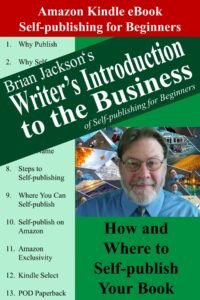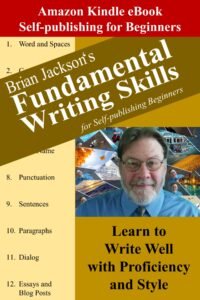In this post, I want to outline the process that readers go through when determining whether to read a book. Logic would dictate that if you, as a writer, nail all these book selection criteria, you’ve gained a reader. So, let’s look at the process through which prospective readers pass before selecting their next purchase. Note that many readers read favorite authors. This post deals with readers selecting a brand new author to read.
The following are the aspects of an Amazon Kindle e-book definition in the order in which they’re evaluated by a reader looking to buy a new book. Score with any aspect and you have an immediate sale. Miss with any aspect and you’ve lost a reader. If the reader is still unsure, they’ll move to the next aspect and continue to evaluate your book.
Book Keywords
Readers search for their next book to read on Amazon, not Google. They use one of two means to search for books on Amazon: 1) the hierarchical category menu or 2) keyword search. Making your book found via category search is a matter of choosing a book category that provides sufficient traffic but not so much traffic that you don’t appear on page one of a category display. To appear in keyword search results, you must place the keywords that readers are searching for into your title, subtitle and book keywords.
If you don’t appear in Amazon reader search results, readers will never see your book, so all the rest of the selection criteria don’t matter. Select categories to become a bestseller (this topic requires a separate post) and insert keywords into your book title (another post) to appear in reader search results.
Book Cover
Contrary to popular wisdom, readers judge a book by its cover. Still, I recommend creating your own DIY book cover. I prefer using Microsoft PowerPoint to create my book covers, as outlined in the following online video training course:
Book Covers: Free PowerPoint Book Covers for Self-publishing
Book covers for self-publishing: PowerPoint book covers: Free book covers
https://www.udemy.com/course/book-cover-design-with-microsoft-powerpoint-2013/?referralCode=B24452083D6FEAC7B99B
The primary purpose of a book cover is to catch the reader’s attention while remaining within the bounds of genre expectations.
Book Price
Do not make your book price an impediment to buying your book.
On Amazon, $2.99 is the least that you can charge for a book and still make a 70% royalty, or approximately $2.09. Charge $2.98 for your book and you’ll only get 35%, or approximately $0.35. You can charge up to $9.99 and still receive a 70% royalty. So, why not do so? In a word, competition. Preferably, you want to be the cheapest book in your niche. The least you can charge for an Amazon Kindle e-book is $0.99; however, if you charge less that $2.99 for an Amazon Kindle ebook, you will only receive a 35% royalty.
I refer to the $2.99 Amazon Kindle ebook price as the sweet spot. It’s the least you can charge for an Amazon Kindle ebook and still receive a 70% royalty.
The price point of $2.99 matches well with the most inexpensive books and should not prove to be an impediment to buying your book.
$2.99 is the optimal Amazon Kindle ebook price for new authors.
Book Description
Your book description had better be the best thing you’ve ever written, followed by your book opening, as discussed in two more sections.
Use your book description to hook the reader into considering buying your book. Most authors leave writing their book description until the very end and then dash off a rushed version. Don’t do this! Take your time and write the best book description you can. Again, additional posts are required to describe how to accomplish this.
Amazon Book Product Page
Make your book lendable. Provide a POD paperback version of your book. Write in a series so that your book product page displays the series. Include A+ content and editorial reviews. Do everything you can to make your Amazon book product page look professional.
Book Opening – The Hook
If you’ve done all the things listed above and the reader is still shopping, they’ll next look inside your book to sample your writing. Begin your book with your best material. This may often involve beginning in the chronological beginning of your book and working backwards to add backstory. So be it! Hook your reader into buying your book by beginning with your best material.
I’ll see you in the classroom,
—Brian


















